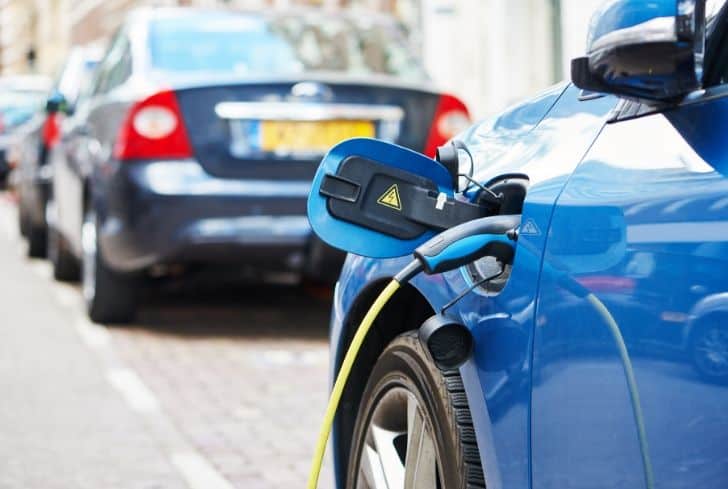What is Power electronics?
Power Electronics is a field of study that involves the use of electronic power devices to convert one kind of electric power into another while maintaining proper control. Solid-state electronics, in general, are used in power electronics to regulate and convert electric power.
What is the working of Power Electronics?
Power electronic systems may be found in a wide range of applications, including:
- Power Generation
- Power Transmission
- Power distribution
- Power Control
To give desired outputs, power semiconductor devices alter the input voltages and currents in all of these applications. To withstand high voltages and currents, the structure of fundamental semiconductor devices is altered. As a consequence, we have silicon-controlled thyristors (SCRs), power diodes, power BJTs, power MOSFETs, gate turn-off thyristors (GTOs), and so on. The device selection is influenced by power levels, switching frequency requirements, efficiency, and the kind of inputs and outputs. For example, the power handled by an EV powertrain is in the kW range. Power MOSFETs that can switch at higher frequencies are frequently employed in these applications. Silicon-controlled rectifiers (SCRs) are used in power transmission applications requiring a few megawatts of power handling.
The importance of Power Electronics’ in Our Daily Lives
The push for more electrification has resulted in an increase in the demand for electric power. For over 5 years, Integra Sources has provided reliable software and hardware solutions to a variety of sectors. This contributes to your business by creating dependable smart products and establishing ourselves as a trustworthy long-term partner. Power processing, in addition to power generation, is critical for efficient power usage. Power electronics are essential for delivering power according to requirements. The importance of power electronics can be easily seen in the following applications.
- The fan regulator is the most fundamental application that demonstrates the importance of power electronics in our daily lives. Bypassing the AC mains voltage through a resistor connected in series with the fan, the fan speed may be regulated. As a result, when the fan is turned on, the series resistor is constantly dissipating power. More new techniques of regulating fans or motors, in general, by adjusting voltage and frequency, have been discovered via research.
- Size, weight, and durability are key factors in aerospace applications, particularly in space applications. Transformers and other energy storage equipment take up a lot of room when electricity is handled at low frequencies. The size of the energy storage devices is considerably decreased when switching converters operate at high switching frequencies. The magnitude of these components is inversely related to the switching frequency. As a result, devices with faster switching times help to reduce the overall size and weight of the system.
- Modern power electronic systems can handle power ranging from a few watts to several megawatts, allowing for efficient and dependable raw-to-regulated power interfaces. As a result, hydraulic and mechanical actuators are being phased out in favor of electric motors controlled with precision via power electronic interfaces.
- Incorporated power electronics can also be found in your kitchen. Induction heating is used to cook food on an induction stove, is a typical example of heat control using a power control circuit that modulates the current that causes the heating.
The Uses of Power Electronics
Power electronics has great uses in a variety of following technical disciplines:
- Chemical processing equipment, welding, electroplating, pumps, lighting, and compressors, boilers, conveyors, cranes, electric vehicles, and furnaces, to name a few industries.
- Refrigerators, vacuum cleaners, air conditioning, sewing machines, dryers, washing machines, mixers and grinders, and other household appliances
- Computers, electric fans, vending machines, audio amplifiers, battery chargers, photocopiers, and other commercial items
- Medical and test equipments and tools, and so forth.
- Electric cars, regulators, radar/sonar, alarms, and other automotive and security systems
- Satellite systems, aircraft and space vehicles, and so on are all examples of aerospace.
- Motor drives, trains, and subways, locomotives, streetcars, elevators, magnetic levitation, and other modes of transportation
- Telecommunications encompasses, among other things, DC power supply, UPS systems, wireless communication, transmitters, and receivers.
- Power systems include static circuit breakers, thyristor-controlled reactors, harmonics suppression, energy storage systems, and so on.
Last thoughts – Endless applications of power electronics
It’s worth noting that one of the most important features of power electronics in terms of application is its capacity to conserve electricity in electrical apparatus. We all know that the world is moving toward energy consumption for human requirements such as domestic chores and industrial demands. The majority of energy is generated by burning fossil fuels, which contributes to global warming. As a result, the application of power electronics in electrical equipment aids in the reduction of electricity consumption and, as a result, increases efficiency.
It’s worth mentioning that estimations imply that power electronics can save about 15% of electricity use. With the current focus on renewable energy, power electronics is unquestionably not only the present but also the future of electrical engineering.








Add Comment